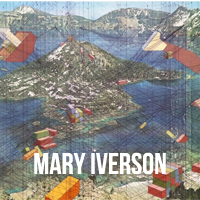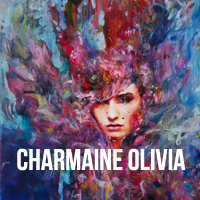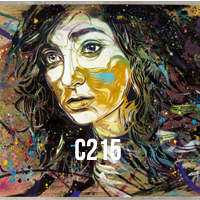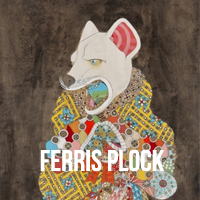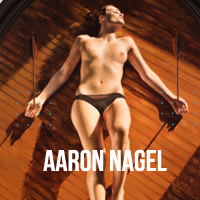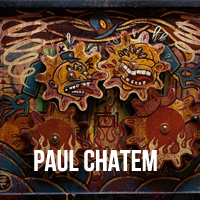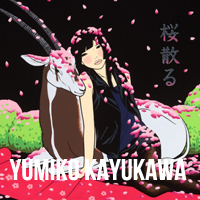Shooting Gallery Exclusive: Interview with Adam Caldwell
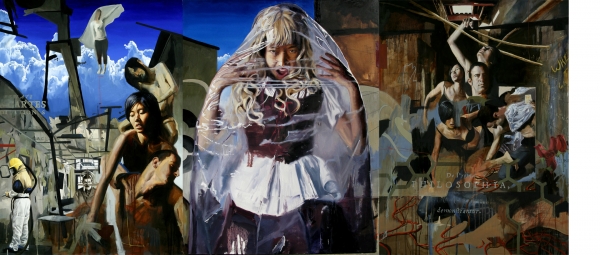
Adam Caldwell‘s Empty Room opened over the weekend, and in the haste of last minute preparations we didn’t have a chance to publish our interview with him until now. The artist paints a collage-style arrangement of disparate imagery that utilizes multiple perspectives, points of reference, and dimensional interplay. In this interview, Caldwell discusses his application of academic techniques, which include traditional European landscape methods and linear perspective. This latest body of work addresses the longstanding western discourse on the divide between body and mind. The show will run through December, 8.
Read the full interview after the jump.
You recently showed in London at the Rook and Raven gallery – is there a difference between how people abroad respond to your work versus Americans? Are you expressing any socio-political themes that are distinctly ‘American’ in nature?
I didn’t see that much difference. I guess the Americans who would like my work have a pretty critical view of our society anyway. I hope.

There is something about your work that is retrospective – where you juxtapose images from antiquity with contemporary mass media. Are we, as a culture, at a historically poignant place of reference?
I don’t want to breed mere nostalgia. I am hoping to show the influence of past historical events and conditions on our present fragmentation. I also love putting black and white images next to color. Layers of history and text.
Your work is a collage of images, expanding beyond the characteristic flatness of much collage art. How have you portrayed depth or used reference points within this complex imagery to create space?
I use principles of western linear perspective to intimate space . I also use some traditional European landscape ideas, basically dividing the picture into a warm reddish foreground, a greenish middle ground, and a bluish background.

Your spatial organization guides the viewer’s eye with imagery that alternately recedes and pops out in an almost cinematic manner. Can you tells a bit about how you use movement in your work?
I try to create eye-movement that leads the viewer through the picture in an engaging way. I also play with scale a lot, putting tiny figures in the front and huge ones in the distance that create weird movements in and out of depth.
You cite Dan Dennett as an influence; he could be considered a ‘painter’s philosopher’ with his theory of the ‘illusion of consciousness’ and how our mind’s expectation fools us into thinking we see details and visuals that aren’t really there. How does this theory play out with your painting?
I am mostly interested in illustrating some of his ideas about consciousness than using them as ways of creating the painting. Of course I know all about the creation of illusion and how to manipulate vision to feign depth and form.
You directly refer to Descartes’ Prima Philosophia by title, which is a treatise that reflects the Western notion of dualism between mind and body – how are your paintings addressing on this dilemma? Are they offering a solution?
They are more about how dualism has a negative impact on culture and identity. People have been wrestling with these ideas for thousands of years and nobody really agrees on the problem, let alone a solution!
Has the general formatting and narrative structure of comic books, which you cite as an influence, affected your composition?
I create compositions that mimic comic book layouts in a lot of ways. Almost like the painting is composed of small, discrete little mini-paintings that invite a more intimate perusal.
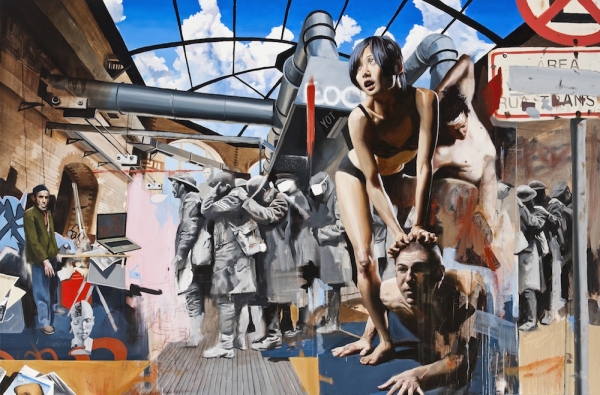
Many of your paintings have clouds and smoke, seeming to serve as devices that add an expansive dimension to your paintings. What other techniques do you use to either expand or contract the space?
I often glaze the backgrounds, applying a thin, dark, and transparent layer of color that pushes the area back in space.
You use recurring characters who look like modern dancers. Why have you chosen these figures? Have the performing arts influenced your work?
I collaborated with the photographer Shaun Roberts for these images and directed the models to get into some twisty evocative poses. They were really cool and got crazy with the gestures. To me they seem like blasts of emotion and thought that are in response to the overall fragmentation and complexity of the piece.


